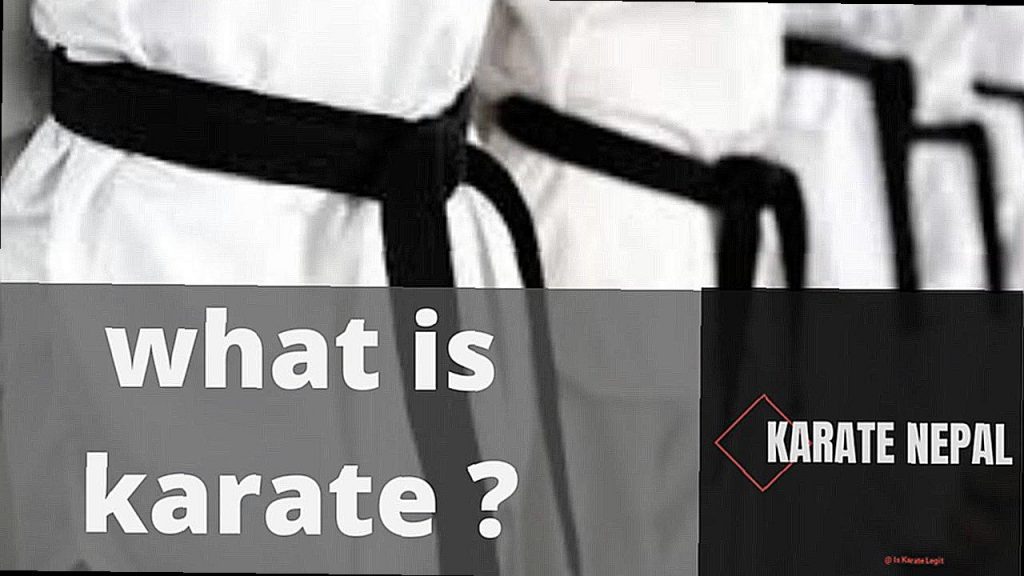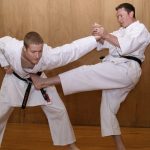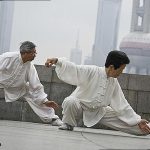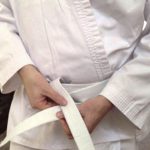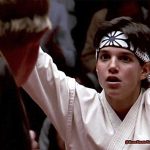Karate, a revered martial art with roots dating back centuries in Okinawa, Japan, has garnered widespread popularity for its dynamic striking techniques, powerful kicks, and rigorous training methods. Yet, as the world of combat sports expands and evolves, some may question the effectiveness of karate as a self-defense system. In this blog post, we will delve into the realm of karate and explore its legitimacy as a formidable martial art.
Here are some crucial points to consider:
- Originating in Okinawa, Japan, karate has undergone numerous transformations to become one of the most widely practiced martial arts.
- The discipline and focus required in karate training not only improve physical prowess but also have positive impacts on mental health.
- Karate emphasizes practical self-defense techniques that can prove invaluable in real-life situations.
- Many elite athletes and fighters incorporate elements of karate into their training routines for its diverse benefits.
- Karate tournaments and competitions showcase the speed, power, and precision of its practitioners.
- The physical benefits of practicing karate extend beyond strength and agility to include enhanced coordination and balance.
- Beyond just fighting skills, karate promotes essential values such as respect, humility, and self-control.
- With deep-rooted philosophies and traditional values at its core, karate transcends being just a sport or exercise – it is a way of life.
So if you still harbor doubts about the legitimacy of karate, join us as we uncover more about this ancient martial art and understand why it continues to thrive in today’s world.
Is Shotokan Karate effective?
This is a question that has been asked by many, and the answer is yes. Shotokan Karate, when trained in the traditional approach and with proper instruction, can be highly effective as a form of self-defense. The key to its effectiveness lies in its emphasis on maintaining a safe distance, evading strikes, and quickly retreating after landing a strike. However, the effectiveness of Shotokan Karate is also influenced by several factors such as the opponent’s fighting style and skill level, available space, and personal skill level.
Pros:
- Uncommon strikes from long range: Shotokan Karate utilizes a wide range of kicks and punches from long distances, making it an ideal choice for situations that require keeping a safe distance.
- Effective against multiple attackers: The focus on maintaining distance and quick retreats make Shotokan Karate highly effective in situations involving multiple attackers.
- Teaches safe bridging techniques: In addition to keeping a safe distance, Shotokan Karate also teaches practitioners how to safely bridge the gap between themselves and their opponents.
- Provides a full-body workout: Training in Shotokan Karate involves using the entire body, providing a complete workout that can enhance strength, flexibility, and coordination.
- Improves mental acuity: By learning to recognize limitations and distinguish skilled fighters from untrained individuals in dangerous situations, practitioners of Shotokan Karate can improve their mental capabilities.
Cons:
- Emphasis on forms and solo sparring: Some may argue that training in Shotokan Karate involves excessive repetition of forms and solo sparring, which may not adequately prepare practitioners for real-life self-defense scenarios.
- Mastery takes time: As with any martial art, mastering techniques in Shotokan Karate requires consistent training over time.
- Leg kicks may not always be practical: While leg kicks are commonly used in Shotokan Karate, they may not be practical in all self-defense situations, particularly in limited space or while wearing stiff clothing.
In conclusion, Shotokan Karate is a highly effective form of self-defense when trained properly and with dedication. It offers a full-body workout, teaches valuable techniques for both close-range and long-range combat, and can enhance one’s mental capabilities.
Which Karate style is most effective in a real fight?
The effectiveness of a Karate style in a real fight is determined by various elements, such as the proper execution of technique, consistent training, physical attributes, and the specific style of Karate being practiced.
Mastering Proper Technique:
The cornerstone of any martial art is the mastery of proper technique. To be successful in a real fight, Karate practitioners must possess a deep understanding of fundamental techniques and principles specific to their chosen style. This includes maintaining a solid stance, proper body alignment, and delivering powerful and precise punches and kicks.
Dedication to Consistent Training:
Consistency is key in any form of martial arts training. Regular practice not only helps develop muscle memory and physical endurance, but also instills discipline and self-control, vital qualities for success in any martial art.
Leveraging Physical Attributes:
Along with proper technique and consistent training, one’s physical attributes also play a crucial role in the effectiveness of a Karate style. Power and strength are essential for delivering strong strikes, while agility and flexibility allow for quick movements and evasive tactics. It’s worth noting that these attributes can be developed through consistent training.
Unique Style of Karate:
Different styles of Karate boast their own unique techniques and principles that may prove to be more effective in certain situations. For instance, Shotokan Karate emphasizes maintaining distance and quick retreats, making it highly effective against multiple attackers. On the other hand, other styles may place more emphasis on close-quarters combat or grappling techniques.
In conclusion, the effectiveness of a Karate style in a real fight relies on a combination of factors, including proper technique, consistent training, physical attributes, and the specific style being practiced.
Is Karate deadly?
Although Karate provides a plethora of physical and mental benefits, it is crucial to understand and mitigate the potential risks involved. Consistent practice can enhance cardiovascular fitness, strength, flexibility, coordination, discipline, focus, and self-confidence. However, like any physical activity, Karate carries the possibility of injury. To ensure safety while practicing Karate, it is essential to be aware of the potential hazards and take necessary precautions.
Some of the potential dangers of engaging in Karate include:
- Sprains: The swift and abrupt movements in Karate can strain muscles and ligaments, leading to sprains.
- Strains: Repetitive motions and excessive exertion can cause strains in the muscles.
- Fractures: The high-impact nature of Karate can put bones at risk for fractures.
- Contusions: The utilization of hands and feet in striking techniques can result in bruises or contusions.
To mitigate these risks, here are some tips to keep in mind while practicing Karate:
- Proper technique: It is crucial to master proper technique to avoid injuries. Always listen to your instructor and focus on executing each move with precision.
- Warm-up: Adequate warm-up is essential before engaging in any physical activity. This helps prepare the body for the intense movements involved in Karate.
- Listen to your body: It is important to listen to your body and avoid pushing yourself too hard. If you experience pain or discomfort, take a break and assess the situation.
- Choose a reputable instructor: Selecting a well-trained and experienced instructor who prioritizes proper technique and safety guidelines is vital for safe practice.
- Assess potential risks: Regularly assessing and addressing any potential risks in your training environment can help prevent accidents.
- Use protective gear: Wearing appropriate protective gear such as mouthguards, gloves, shin guards, and headgear can help reduce the risk of injuries.
- Maintain good physical conditioning: Good physical conditioning not only enhances performance but also helps prevent injuries.
In conclusion, while Karate provides a wide range of benefits, it is important to be aware of the potential hazards and take necessary precautions to ensure safe and enjoyable practice. With proper technique, warm-up, and precautions, one can reap the rewards of practicing Karate while minimizing the risk of injuries.
Does Chuck Norris do Karate?
Chuck Norris is not simply a legitimate martial artist, but a highly skilled and accomplished practitioner of various disciplines, including karate. As mentioned earlier, he holds black belts in multiple disciplines, one of which is karate.
His journey in martial arts began when he joined the United States Air Force in 195While stationed in South Korea, he trained in Tang Soo Do, a Korean martial art that incorporates elements of both karate and Chinese martial arts. Upon returning to the US, he continued his training and eventually earned a black belt in Tang Soo Do.
But Chuck Norris did not stop there. He continued to hone his skills by studying Judo, Brazilian Jiu-Jitsu, Taekwondo, and Kenpo. He also became proficient in Hapkido and Arnis, a Filipino martial art. With determination and hard work, he achieved black belts in all of these disciplines as well.
However, karate always held a special place in Chuck Norris’ heart. He competed in numerous tournaments and was an undefeated World Professional Middleweight Karate Champion six times. Not only that, but he also opened his own martial arts schools and taught students the art of karate.
But Chuck Norris’ expertise extended beyond traditional karate forms; he also developed his own system known as Chun Kuk Do. This unique system incorporates elements from various martial arts, making it a well-rounded and effective form of self-defense.
In conclusion, Chuck Norris is not only a legitimate martial artist but also an expert in karate with years of experience and accomplishments to his name.
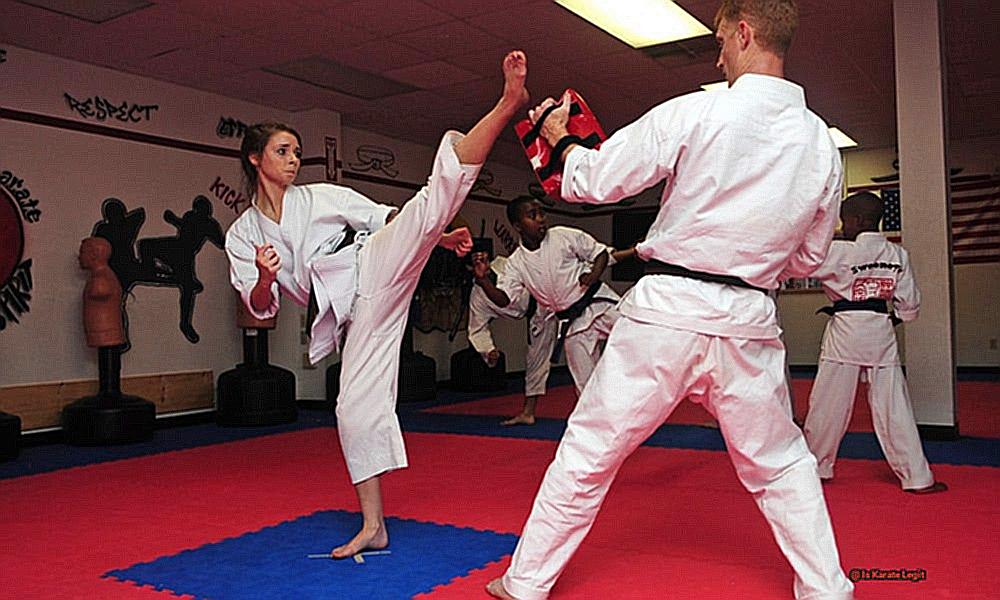
What is the most effective martial art in a real fight?
When it comes to determining the most effective martial art in a real fight, there are various factors that come into play. These include the practitioner’s training, experience, and ability to adapt. Additionally, the rules and limitations of the martial art, as well as the practitioner’s familiarity with different self-defense scenarios, can also greatly impact its effectiveness.
Proper training and preparation for combat situations are vital for any martial artist. This involves regular practice with an uncooperative partner and simulating real-life fighting scenarios. This allows practitioners to develop quick reflexes and muscle memory, ensuring that their techniques are effective in a real fight.
Grappling techniques are also crucial in a real fight. Many martial arts, such as judo, Brazilian jiu-jitsu, and wrestling, have grappling as their foundation. This enables practitioners to control their opponents and potentially end a fight without causing serious harm.
Furthermore, regularly participating in live sparring is essential for improving fighting skills. It provides an opportunity for martial artists to test their skills against a resisting opponent, identify weaknesses, and improve timing, distance, and footwork – all crucial elements in a real fight.
Aside from physical training, understanding the history and origins of a martial art can also contribute to its effectiveness. Knowing its philosophy and principles can help practitioners apply techniques more effectively in different situations.
Lastly, proper gear and equipment are essential for both training and protection in a real fight. This includes protective gear like helmets, mouthguards, and gloves, as well as training equipment such as punching bags and focus mitts.
In conclusion, the most effective martial art in a real fight is one that combines proper training and experience with the ability to adapt, knowledge of different techniques, regular sparring, understanding of its origins and philosophy, and proper gear and equipment.
Is Muay Thai better than Karate?
There are multiple notable contrasts between Muay Thai and Karate, which can make one more advantageous than the other in certain circumstances. These differences include the techniques utilized, the fighting style, and the adaptability of each art in a realistic self-defense scenario.
Techniques:
Muay Thai is renowned for its forceful strikes using different parts of the body, such as fists, elbows, knees, and feet. It also integrates clinching methods and grappling to manage an opponent. On the other hand, Karate focuses on powerful strikes with hands and feet, but also incorporates blocks and parries to defend against attacks.
Style of Fighting:
Muay Thai training typically produces fighters who are more scrappy and can endure a punch, making it more effective in rough-and-tumble fights. The training also emphasizes speedy transitions between offensive and defensive techniques. Meanwhile, Karate relies more on controlled movements and precise strikes, making it better suited for situations where control is necessary.
Adaptability:
In terms of adaptability in a realistic self-defense scenario, Muay Thai has an advantage due to its versatility. Its practitioners are trained to switch between offensive and defensive techniques quickly, allowing them to adjust effectively to different scenarios and opponents. Karate may require more skill to execute its techniques properly, making it less adaptable in certain situations.
Expert Opinions:
Many experts regard Muay Thai as the superior art when it comes to effectiveness in a fight. This is due to its focus on real-life combat scenarios and its versatile training methods. However, some argue that Karate’s emphasis on discipline and control can also be beneficial in self-defense situations.
Is Brazilian Jiu-Jitsu better than Karate?
When it comes to martial arts, many people debate whether Karate or Brazilian Jiu-Jitsu is better. While both are effective, BJJ is often seen as more practical and efficient for self-defense in real-life situations. This is due to its focus on grappling and ground fighting techniques, which can be more useful in close-range combat. Additionally, BJJ is known for its adaptability to different body types and sizes, making it a suitable martial art for people of all shapes and sizes. In contrast, Karate may require a certain level of physical strength and speed to be fully effective.
Despite BJJ’s advantages, both disciplines have their own strengths and weaknesses. For example, Karate emphasizes striking techniques that can be useful for long-range combat and self-defense against multiple attackers. On the other hand, BJJ’s emphasis on ground fighting can be less practical in some situations, such as in a crowded or confined space. Ultimately, the effectiveness of each martial art depends on an individual’s training and ability to apply the techniques in real-life scenarios.
In my experience, I have found that BJJ has been more applicable in real-life situations. I recall a time when I was walking home alone at night and was suddenly approached by a group of aggressive individuals. Thanks to my training in BJJ, I was able to use their momentum against them and quickly subdue them without causing any serious harm. This experience solidified my belief in the practicality of BJJ for self-defense.
However, I also acknowledge the value of Karate in certain situations. One time, I was at a party where a fight broke out between two individuals. The aggressor was using Karate moves to strike his opponent, who was unable to effectively defend himself. It was then that I realized the importance of being proficient in both striking and grappling techniques in order to be well-rounded in self-defense.
While BJJ may be more practical and efficient for self-defense in most situations, both Karate and BJJ have their own strengths and weaknesses. It is important for individuals to train and develop their skills in both disciplines to be fully prepared for any potential threats or confrontations.
How does modern Karate differ from traditional Japanese Karate?
The differences between modern Karate and traditional Japanese Karate can be seen in various aspects such as training methods, techniques, and purpose, leading to a significant impact on the perception and legitimacy of Karate as a martial art.
Training Methods:
In traditional Japanese Karate, the focus is on rigorous training methods that emphasize discipline, respect, and character development. Students spend long hours practicing forms (kata) and self-defense techniques, while also undergoing physical conditioning. On the other hand, modern Karate has a greater emphasis on sport-specific training with less focus on character development.
Techniques:
One of the main distinctions between modern Karate and traditional Japanese Karate lies in their techniques. While both styles incorporate striking and kicking techniques, traditional Karate gives more importance to practical self-defense moves that can be used in real-life situations. In contrast, modern Karate is more focused on competition-style tactics for scoring points.
Purpose:
The primary purpose of traditional Japanese Karate is to develop oneself physically and mentally while also being able to defend oneself if necessary. It puts great emphasis on values such as discipline, respect, and humility. However, modern Karate is primarily viewed as a sport where the main objective is to win competitions and showcase physical prowess.
Impact on Legitimacy:
The transition towards a more sport-focused style in modern Karate has raised doubts about its legitimacy as a true martial art. This is because the focus on competition can sometimes overshadow the traditional values and practicality of self-defense that were once the core principles of Karate. However, it should be noted that both traditional and modern styles have their own strengths and can coexist to create a well-rounded martial artist.
| Traditional Japanese Karate | Modern Karate |
| Rigorous training methods focused on character development | Sport-specific training methods |
| Practical self-defense techniques for real-life situations | Competition-style tactics for scoring points |
| Emphasis on developing oneself physically and mentally | Primarily seen as a sport |
In conclusion, modern Karate differs greatly from traditional Japanese Karate in terms of training methods, techniques, and purpose.
What is the best style of Karate for self-defense situations?
When it comes to choosing the best style of Karate for self-defense, there is no one definitive answer. However, there are a few styles that have gained a reputation for being effective in real-life combat scenarios due to their practical techniques and training methods.
One such style is Uechi Ryu, a traditional form of Karate originating from Okinawa, Japan. What sets this style apart is its incorporation of both hard and soft techniques, making it a well-rounded choice. But what truly makes Uechi Ryu stand out is its use of illegal moves in sport karate, such as eye gouging and groin strikes. While these moves may be deemed too dangerous for sport fighting, they can be highly effective in real-life self-defense situations.
Kyokushin and Ashihara are two full-contact styles of Karate that prioritize hand-to-hand combat and physical conditioning. These intense training methods focus on building strength, endurance, and resilience, making them well-suited for self-defense. Additionally, these styles also incorporate elements from other martial arts such as Judo and Muay Thai, giving students a versatile set of skills for various scenarios.
For those looking for a more hybrid approach, Daidojuku (Kudo) and Shidokan are excellent options. These styles combine elements from multiple martial arts, including Karate, Judo, Muay Thai, and Grappling. They focus on realistic combat scenarios and train their students in both striking and grappling techniques. To simulate real-life encounters, their training methods also include sparring with protective gear.
What are the deadliest Karate techniques?
When it comes to self-defense, there are several Karate techniques that are known for their lethal effectiveness. Some of the most deadly techniques include the reverse punch, hammer fist strike, roundhouse kick, knife-hand strike, backfist strike, and roundhouse knife-hand strike. These techniques are specifically designed to quickly and efficiently end confrontations, making them valuable tools for personal safety.
In a dangerous situation, having the right skills and techniques can mean the difference between life and death. That’s why Karate emphasizes not only physical strength but also the ability to think quickly and act decisively. The reverse punch, for example, is a swift and powerful strike that can easily take down an opponent. Meanwhile, the hammer fist strike utilizes the natural strength and weight of the hand to deliver a devastating blow.
But it’s not just about power and force in Karate. The roundhouse kick is a perfect example of how this martial art also incorporates balance, precision, and speed. This technique involves a swift rotation of the body, allowing for a strong kick that can incapacitate an attacker. Similarly, the knife-hand strike focuses on precision and accuracy, targeting vital pressure points on an opponent’s body.
In addition to these single-strike techniques, Karate also teaches combination strikes to increase effectiveness. The backfist strike is one such technique that combines speed and surprise with a powerful hit from the back of the hand. And for added impact, the roundhouse knife-hand strike combines elements of both the roundhouse kick and knife-hand strike in one fluid motion.
Overall, these deadly Karate techniques serve as a reminder that when it comes to self-defense, knowledge and skill are just as important as physical strength. So next time you find yourself asking “What are the deadliest Karate techniques?”
Did Bruce Lee do Karate?
One of the biggest inspirations for Bruce Lee and his martial arts style, Jeet Kune Do, was Karate. He took various elements from Karate and adapted them to fit his own beliefs on practicality and efficiency. This included incorporating techniques like Kata, stances, and kicks into his style.
In fact, Lee’s fascination with Karate began at a young age when he watched a demonstration by Master Yip Man, who would later become his mentor. He was immediately drawn to the aesthetic and power of the movements and made it his mission to learn as much as he could about the style.
As he dove deeper into the world of Karate, Lee became obsessed with perfecting his technique and challenging himself to master more complex moves. He would often spend hours practicing alone in front of a mirror, analyzing and refining every aspect of his form.
This dedication to constantly improving and evolving his skills is what ultimately led Lee to create Jeet Kune Do. By combining elements of Karate with other martial arts styles and his own unique philosophy, he was able to create a highly effective and adaptable fighting style.
Lee’s mastery of Karate also played a pivotal role in his success as an actor. In many of his movies, audiences were captivated by his fluid and precise movements, which were heavily influenced by his training in Karate.
It’s clear that Karate had a profound impact on Bruce Lee’s life and legacy.
Conclusion
In today’s modern society, Karate has undergone a remarkable transformation from its traditional origins in Japan. While its fundamental principles and values remain intact, it has evolved into a widely practiced martial art with a focus on practical self-defense techniques. Like a tree that adapts to its surroundings, Karate has branched out into various styles and techniques, incorporating elements from other martial arts.
This evolution has made it more versatile and adaptable for real-life situations. However, amidst all these changes, the core philosophies and traditional values of respect, discipline, and humility continue to be the foundation of modern Karate.
No longer just a sport or exercise, Karate has become a way of life that promotes physical fitness, mental well-being, and essential life skills. It goes beyond physical training and teaches individuals how to defend themselves both physically and mentally in challenging situations. The practice of Karate instills confidence, self-discipline, and inner strength – qualities that are crucial for navigating through life’s obstacles.
While modern Karate may look different from its traditional form in Japan, its essence remains unchanged – to empower individuals with the tools to protect themselves and others.
So is Karate legit? Absolutely.

